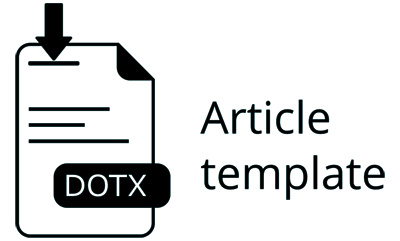ANALISIS PEMILIHAN LOKASI TEMPAT PEMROSESAN AKHIR SAMPAH BERBASIS SISTEM INFORMASI GEOGRAFIS (SIG) DI KABUPATEN MINAHASA TENGGARA
Abstract
Southeast Minahasa Regency experiences an increase in population every year. This increase resulted in an increase in the volume and type of waste. The Final Processing Site (FPS) is the final stage of waste processing. Waste from collection or transportation and the rest of the results from recycling processing in an area or city is accommodated for management. For this reason, FPS must be prepared correctly and follow applicable standards so as not to pollute the surrounding environment and harm the community. The purposes of this study are 1) to determine the stages of selecting a landfill site according to applicable standards using a Geographic Information System (GIS); 2) to find out where the alternative location for the final waste processing site (FPS) is in Kab. Southeast Minahasa. The method used is descriptive quantitative. Based on the results of the research, the stages of choosing the FPS location based on SNI 03-3241-1994 and the Regulation of the Minister of Public Works of the Republic of Indonesia Number 03/PRT/M/2013 there are three stages, namely the Regional Stage, the Provisioning Stage, and the Determination Stage. The three stages were analyzed using GIS with Buffering and Overlay methods with a Binary quantitative approach. The location that became an alternative to FPS with the highest score of 311 was in Pusomaen District. The location is quite far from the existing FPS location; hence the selected FPS alternative can be input for the government for spatial planning in the Southeast Minahasa Regency area.
References
Anonim. (1994). SNI 19-3241:1994 tentang Tata Cara Pemlihan Lokasi Tempat Pembuangan Akhir Sampah. Badan Standardisasi Nasional.
Anonim. (2008). Undang-Undang Republik Indonesia Nomor 18 Tahun 2008 tentang Pengelolaan Sampah. Lembaran Negara Republik Indonesia.
Anonim. (2012). Peraturan Pemerintah (PP) Nomor 81 Tahun 2012 tentang Pengelolaan Sampah Rumah Tangga Dan Sampah Sejenis Sampah Rumah Tangga. Pemerintah Republik Indonesia.
Anonim. (2013a). Peraturan Daerah Kabupaten Minahasa Tenggara Nomor 3 Tahun 2013 tentang Rencana Tata Ruang Wilayah Kabupaten Minahasa Tenggara Tahun 2013-2033. Pemerintah Daerah Kabupaten Minahasa Tenggara.
Anonim. (2013b). Peraturan Menteri Pekerjaan Umum dan Perumahan Rakyat Nomor 03/PRT/M/2013 tentang Penyelenggaraan Prasarana dan Sarana Persampahan dalam Penanganan Sampah Rumah Tangga dan Sampah Sejenis Sampah Rumah Tangga. Kementerian Pekerjaan Umum dan Perumahan Rakyat.
BPS. (2021). Kabupaten Minahasa Tenggara Dalam Angka Tahun 2021. Badan Pusat Statistik Kabupaten Minahasa Tenggara.
Kaza, S., Yao, L., Bhada-Tata, P., & Woerden, F. Van. (2018). What a Waste 2.0 : A Global Snapshot of Solid Waste Management to 2050. World Bank.
Khadiyanto, P. (2005). Tata Ruang Berbasis pada Kesesuaian Lahan (Cetakan Pe). Badan Penerbit Universitas Diponegoro.
KLHK. (2017). Indeks Kualitas Lingkungan Hidup (IKLH) 2017. Kementerian Lingkungan Hidup dan Kehutanan.
Rainda, N., & Anna, A. N. (2017). Analisis Penentuan Lokasi Tempat Pembuangan Akhir (Tpa) Di Kabupaten Temanggung Menggunakan Aplikasi Sistem Informasi Geografis. Universitas Muhammadiyah Surakarta.
Riogilang, H. (2020). Model Peningkatan Partisipasi Masyarakat dan Penguatan Sinergi Dalam Pengelolaan Sampah Perkotaan di Kelurahan Sumompo Kecamatan Tuminting Kota Manado. Media Matrasain, 17(2), 64–69.
Siregar, N. A. (2013). Kajian Permeabilitas Beberapa Jenis Tanah di Lahan Percobaan Kwala Bekala Usu Melalui Uji Laboratorium dan Lapangan. Universitas Sumatera Utara.
Authors who publish with this journal agree to the following terms:
- Authors retain copyright and grant the journal right of first publication with the work simultaneously licensed under a Creative Commons Attribution License that allows others to share the work with an acknowledgement of the work's authorship and initial publication in this journal.
- Authors are able to enter into separate, additional contractual arrangements for the non-exclusive distribution of the journal's published version of the work (e.g., post it to an institutional repository or publish it in a book), with an acknowledgement of its initial publication in this journal.
- Authors are permitted and encouraged to post their work online (e.g., in institutional repositories or on their website) prior to and during the submission process, as it can lead to productive exchanges, as well as earlier and greater citation of published work (See The Effect of Open Access).
 Abstract viewed = 432 times
Abstract viewed = 432 times
 PDF downloaded = 862 times
PDF downloaded = 862 times










